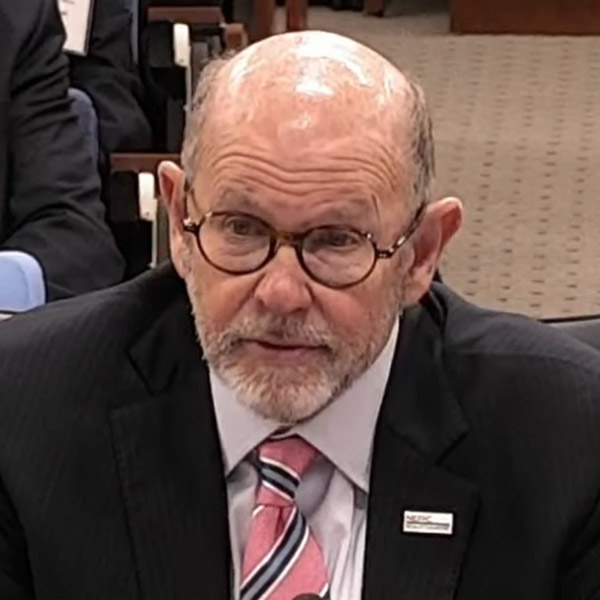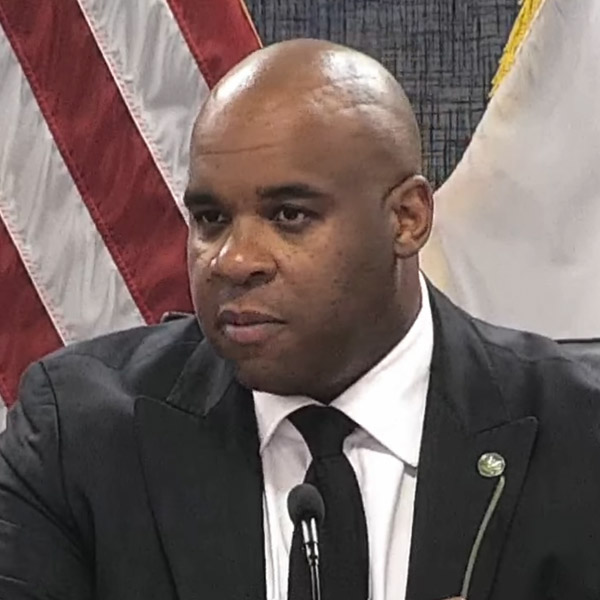ARLINGTON, Va. ― FERC Order 1920 eventually may provide a structure for long-term, interregional transmission planning, but the anticipated yearslong implementation of the rule could mean states will have to lead in planning for their nearer-term transmission needs, according to a new report from the American Council on Renewable Energy and The Brattle Group.
Rolled out at ACORE’s recent Grid Forum, the report focuses primarily on PJM’s Mid-Atlantic states, which are developing transmission for offshore wind and other renewables. New Jersey’s state agreement approach (SAA) ― in which the state’s Board of Public Utilities has partnered with PJM on project solicitations ― is seen as a model that could cut costs and interconnection times.
Brattle’s Joe DeLosa III laid out seven options states might pursue, ranging from following New Jersey’s lead with a single-state SAA with a single “driver” ― such as meeting state goals for offshore wind deployment ― to waiting for implementation of 1920.
Other SAA options include a single state agreement covering multiple drivers ― say, reliability and a renewable energy target ― and multiple states with single or multiple drivers. Outside of SAAs or 1920, the report looks at “voluntary solicitations” involving either single or multiple PJM states or interregional, multistate efforts, for example, bringing in New York or New England states.
“Building offshore wind at scale in the next decade is essential to meeting electricity demand in a clean and reliable manner, but transmission planning must start today,” said Evan Vaughan, executive director of MAREC Action, in an ACORE press release announcing the report. States must “set their own direction on transmission planning to address multiple needs — reliability, economic growth, clean energy deployment, extreme weather resilience — in the most efficient way possible.”
MAREC Action is an advocacy group representing utility-scale renewable energy developers in the Mid-Atlantic and Appalachia.
ACORE CEO Ray Long agreed that “time is of the essence, and our report lays out the opportunities for states to maximize the benefits of proactive planning, particularly for offshore wind.”
RTO Insider did offer PJM the opportunity to comment on the report, but a spokesperson said the RTO still was reviewing it and would “defer comment at this time.”
The SAA Options
The report sees state leadership as filling a critical gap in PJM’s planning processes.
“Despite recent stakeholder efforts, PJM’s transmission planning process has not yet evolved to the point where it is cost-effectively meeting multiple system needs, including the public policy goals of PJM states. This would require a more proactive and holistic planning approach,” the report says.
Brattle’s analysis of benefits of each approach comes down squarely on going with an SAA, which DeLosa said provides more flexibility. “We just recommend that if a state or states within PJM seek to lead transmission procurement, it makes a lot more sense for them to use the tariff structure and the experience of New Jersey and go with the SAA.”
To date, New Jersey has completed one solicitation under its SAA with PJM, awarding onshore transmission projects, but put a second solicitation on hold this year, according to a recent update from PJM.
Maryland’s Promoting Offshore Wind Energy Resources Act (SB 781), passed in 2023, required the state’s Public Service Commission (PSC) to ask PJM for an analysis of the transmission upgrades that might be needed for offshore and onshore wind. Meetings between PJM, the PSC and other state agencies are ongoing.
At the same time, the PSC has been talking with New Jersey and Delaware about the possibility of regional collaboration on transmission planning. But according to a recent report from the commission, each of the three states is at a different stage of analyzing and considering their options, making collaboration unfeasible.
DeLosa also sees potential for interregional planning between PJM and non-PJM states. “We believe it could be well utilized for targeted procurements, even over a broad geographic scope,” he said. “We envision so-called ‘low-hanging fruit’ projects … that are either well-known or somewhat advanced in their development that would kind of evidently provide benefits.
“If sufficiently targeted, we also believe a cost-allocation approach, which could be a key underlying element of this, could be developed [and] limited to particular projects and the associated benefits case.”
A major caveat for any of these approaches is the “leadership role that is required of the states, the ongoing project management responsibilities for the projects that have been selected,” he said. “They persist over a long period of time, and they don’t go away. … There needs to be some method of supporting the states so that they can actually meet the needs, the leadership needs … under some of these frameworks.”

